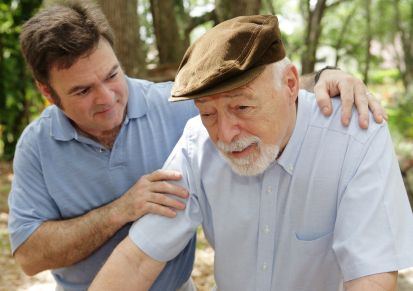Article
Healthcare Service Utilization For Patients With Chronic Back Pain Decreases After Rehabilitation
Author(s):
The use of healthcare services, with the exception of physiotherapy and psychotherapy, in patients with chronic back pain was lower 6 months after rehabilitation in Germany than before rehabilitation, according to a study published in BMC Health Services Research.
The use of healthcare services after rehabilitation for chronic back pain was slightly lower than before rehabilitation, according to a study published in BMC Health Services Research.
Back pain lasting longer than 3 months is classified as chronic, with a lifetime prevalence of 10% to 27%, according to the authors of the study. Subsequently, patients with chronic back pain utilize healthcare services more frequently than the average population.
According to The Behavioral Model of Health Services Use in Germany, on average, patients with acute and chronic back pain consulted a general practitioner 4.8 times over 6 months, and 41% also visited a specialist during the same 6 months.
“A systematic review revealed that the effects of a multidisciplinary rehabilitation on healthcare utilization is patients with chronic back pain have rarely been investigated, although they have a large impact on society and costs,” wrote the authors. “Multidisciplinary rehabilitation seems to have small to moderate effects on pain intensity, disability, and the ability to work.”
The authors performed a secondary analysis of data analyzed from the project of patient—provider communication for chronically ill patients by gender and specific preferences of patients. Patients with chronic back pain from 4 inpatient and 7 outpatient rehabilitation centers throughout Germany were identified, and the 688 participants filled out questionnaires at the beginning of rehabilitation, directly after rehabilitation, and 6 months after rehabilitation.
The mean length of rehabilitation was 20.62 days. The programs included educational, somatic, psychotherapeutic, social, and occupation-related therapy. Treatment elements included: information on chronic back pain, training based on a biopsychosocial disease model, occupational therapy, physical therapy, and exercise therapy.
To measure the utilization of healthcare services following rehabilitation, the authors recognized multiple services: general practitioners, specialists, hospitals, physiotherapy, psychotherapy, complementary therapist, and massage.
Results showed that most participants consulted at least 1 type of healthcare service pre- and post-rehabilitation. Before rehabilitation, 94.6% of participants went to a general practitioner, compared to 85.9% after rehabilitation. Specialist utilization dropped from 93% to 84.4%; admission to hospitals dropped from 30.2% to 18.6%; and massage utilization dropped from 45.9% to 34.8%. While the utilization of physiotherapy and psychotherapy decreased, the differences were not substantial.
The influence of these findings can be shown in the reduction in days of sick leave and psychological impairment. In addition, pain intensity, pain function and disability, and health-related quality of life improved following rehabilitation.
“The effect sizes for the decrease in healthcare utilization after multidisciplinary rehabilitation shown in the present study might be small,” wrote the authors. “However, the results indicate important findings regarding direct costs due to chronic back pain that were also proved to be reduced after a special pain treatment.”
Reference
Görge M, Ziehm J, Farin E. Health-care utilization of patients with chronic back pain before and after rehabilitation. BMC Health Serv Res. doi: 10.1186/s12913-017-2757-3. Accessed December 7, 2017.
Newsletter
Stay ahead of policy, cost, and value—subscribe to AJMC for expert insights at the intersection of clinical care and health economics.

Incorporating Discussions of Cannabis Use Into Oncology Care Visits

How Patients Think About Pain May Impact Activity Levels, Study Says

